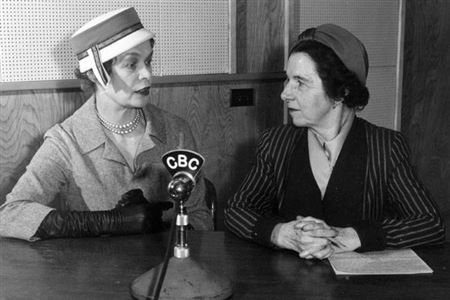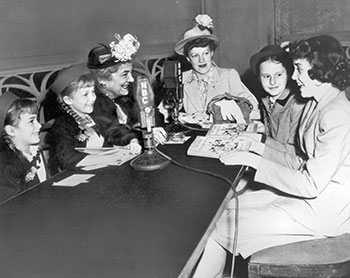AWC Timeline: 1950s

<< Back to
AWC’s History
The decade of the
1950s was challenging for female foreign correspondents with the aftermath of World War II and the beginning of the Korean War. Theta Sig members reported on history-making events after World War II. Marguerite Higgins of the New York Herald Tribune was the Tokyo bureau chief and was the only female reporter to witness the North Korean invasion. May Craig, who had witnessed the Normandy landings and flown in the Berlin airlift, was also in Korea, traveling by jets launched from carriers. Also at this time, Margaret Bourke-White’s photos of Korean guerilla fighters appeared in Life magazine.

Back in the states, Theta Sigma Phi adopted the Hospitalized Veterans Writing Project, founded by Theta Sig Elizabeth Fontaine in 1946, to teach veterans in local hospitals how to write, awarding cash prizes for their journalistic efforts. This program was to become a national service project for more than 20 years.
The Korean War spurred Theta Sig President Marie Margaret Winthrop to call for a global view “to improve communications among ourselves, our immediate neighbors, our fellow Americans and humans across the world.” This became Theta Sigma Phi’s goal for the ‘50s. In 1954, with 88 members living abroad, the organization expanded internationally, forming Theta Sigma Phi Internationale. Almost every issue of The Matrix during this time featured articles on members living and working abroad.
In 1959, Theta Sigma Phi celebrated its golden anniversary where it all began – at the University of Washington in Seattle. Convention delegates had the opportunity to meet founders Blanche Brace, Irene Somerville Durham and Georgina MacDougall Davis. These three women passed the torch of leadership to the next generation with these words: “From your strength and progress will come our greatest honor.”